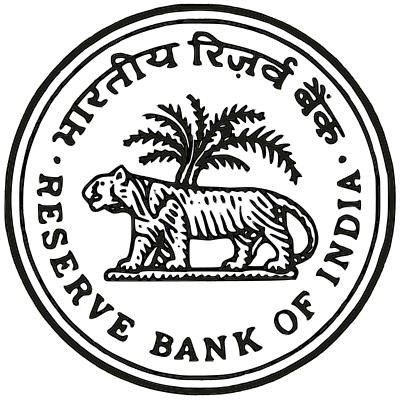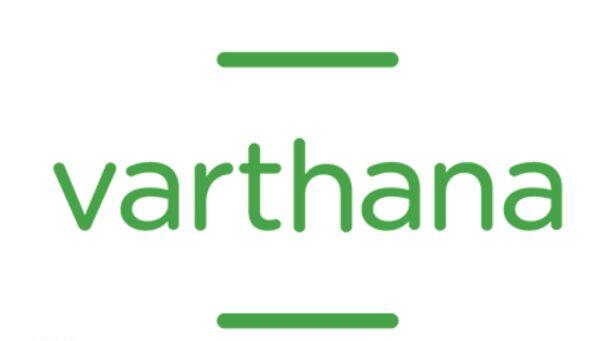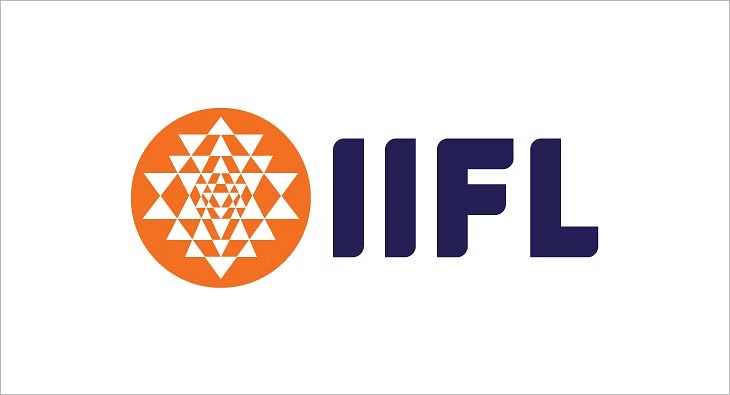Welcome to Daily Banking Digest, your premier source for the latest news and insights on April 16, 2024, focusing on banking, the economy, and finance. Our platform offers a comprehensive overview of the day’s most critical financial stories, market trends, and economic developments. Whether you’re a professional in the financial sector, an investor monitoring market movement, or someone interested in staying informed about the economic landscape, Daily Banking Digest provides reliable, up-to-date information.
Join our Telegram Channel for Daily PDF in your Inbox – Click Here
Table of Contents
NFRA Sanctions Two CAs in Reliance Capital Case, Prohibiting Their Appointment as Auditors
The National Financial Reporting Authority (NFRA) has penalized two Chartered Accountants (CAs) and an audit firm for misconduct related to a financial transaction with Reliance Capital. The CAs have been debarred for 5-10 years, and the firm has been fined up to ₹3 crore.

Key Points:
Misconduct Allegations:
- The CAs and audit firm allegedly failed to conduct the audit with due diligence and skepticism.
- They concurred with material misstatements in the financial statements, including inadequate provisions, unjustified loan valuations, and irrational business practices.
Penalties:
- Audit Firm M/s Pathak, H.D. & Associates: Monetary penalty of ₹3 crore
- Engagement Partner (EP) CA Parimal Kumar Jha: Monetary penalty of ₹1 crore and 10-year debarment
- Engagement Quality Control Review Partner (EQCR) CA Vishal D Shah: Monetary penalty of ₹50 Lakh and 5-year debarment
Reasons for Penalties:
- Recklessness and unprofessionalism in rationalizing the company’s actions
- Inappropriate evaluation of the resigned auditor’s work
- Ignoring accounting and auditing fundamentals
Effective Date:
- The penalties will become effective after 30 days from the date of issuance (April 12, 2024).
India’s Goods Exports Decline by 3.1% to $437 Billion in FY24 Amidst Global Economic Headwinds
India’s foreign trade faced challenges in 2023-24 due to geopolitical conflicts, global demand slowdown, and falling commodity prices. Goods exports declined by 3.11% to $437.06 billion, while imports contracted by 5.41% to $677.23 billion, resulting in a narrower trade deficit of $240.17 billion. Despite these challenges, India’s overall exports (goods and services) remained marginally higher than the previous year.
Key Points:
Exports:
- Goods exports fell by 3.11% to $437.06 billion.
- Key sectors facing challenges included petroleum products, gems & jewellery, readymade garments, chemicals, leather, and marine products.
- Non-petroleum and non-gems & jewellery exports increased to $320.21 billion.
- Sectors that performed well included electronic goods, engineering goods, drugs & pharmaceuticals, and cotton yarn.
Imports:
- Imports contracted by 5.41% to $677.23 billion.
- Significant declines were seen in petroleum, coal & coke, pearls, precious and semi-precious stones, transport equipment, and chemicals.
Trade Deficit:
- Trade deficit narrowed by 9.33% to $240.17 billion.
Challenges:
- Geopolitical conflicts, including the Ukraine-Russia war and Red Sea crisis.
- Slowdown in global demand.
- Fall in commodity prices.
Outlook:
- Goods exports in March 2024 showed improvement.
- Global trade projections indicate a positive outlook for Indian exports.
- Government focus on market and product diversification.
Wholesale Price Index (WPI) Inflation Increases to 0.53% in March
Wholesale inflation in India, as measured by the Wholesale Price Index (WPI), rose to 0.53% in March 2024, driven by a surge in vegetable prices. In contrast, retail inflation, based on the Consumer Price Index (CPI), declined to 4.85%.
Key Points:
Vegetable Inflation: – Vegetable inflation surged to 19.52% in March 2024, up from -2.39% a year ago. – Potato prices jumped by 52.96%, while onion prices increased by 56.99%.
Food Inflation: – Food inflation rose marginally to 6.88% in March 2024, driven by higher vegetable prices.
Crude Petroleum Inflation: – Inflation in the crude petroleum segment increased to 10.26% due to rising global crude prices.
WPI Trend: – WPI has been positive since November 2023, after being in the negative zone from April to October.
Outlook: – WPI inflation is expected to edge up in the coming months due to rising global commodity prices. – However, a normal monsoon and recovery in rabi sowing may cushion food inflation. – WPI inflation is projected to average around 3% in FY25.
India’s Merchandise Exports Decline Slightly in March, Reaching $437 Billion for FY24
India’s merchandise exports declined slightly in March 2024, while imports also decreased, resulting in a trade deficit of $15.6 billion. For the entire fiscal year 2023-24, exports fell by 3.11% and imports by 5.41%, leading to a trade deficit of $240.17 billion. Despite the decline in merchandise exports, overall exports (including services) are projected to surpass last year’s record.
Key Points:
Exports:
- Merchandise exports declined marginally in March to $41.68 billion.
- For the fiscal year 2023-24, merchandise exports dipped by 3.11% to $437.06 billion.
- Main drivers of export growth include electronic goods, drugs and pharmaceuticals, and engineering goods.
Imports:
- Imports decreased by 5.98% to $57.28 billion in March.
- For the fiscal year 2023-24, imports declined by 5.41% to $677.24 billion.
Trade Deficit:
- The trade deficit in March stood at $15.6 billion.
- For the fiscal year 2023-24, the trade deficit was $240.17 billion.
Overall Exports (Merchandise + Services):
- Overall exports are estimated to surpass last year’s record, reaching $776.68 billion in 2023-24.
Other:
- The commerce ministry is monitoring the situation in the Middle East and will take appropriate action if necessary.
- The overall trade deficit is projected to improve significantly in 2023-24.
IMGC Partners with Bank of India to Enhance Home Loan Accessibility with Mortgage Guarantee
India Mortgage Guarantee Corporation (IMGC) and Bank of India (BOI) have partnered to offer mortgage guarantee-backed home loan products, particularly targeting affordable housing segments. IMGC’s guarantee reduces default risk for BOI, enabling more favorable loan terms for borrowers. The collaboration aims to increase homeownership accessibility for a wider range of individuals in India.

Key Points:
Partnership: – IMGC and BOI have formed a strategic partnership to offer mortgage guarantee-backed home loans.
Target Market: – The collaboration focuses on salaried and self-employed home loan customers in the affordable housing segment.
IMGC’s Role: – IMGC provides mortgage guarantees, mitigating default risk for BOI.
BOI’s Role: – BOI leverages its extensive branch network to offer home loan products with enhanced flexibility and security.
Benefits for Borrowers: – More favorable loan terms due to reduced default risk. – Increased accessibility to homeownership for a wider range of borrowers.
Financial Inclusion: – The partnership promotes financial inclusion by making homeownership more accessible.
Early Home Ownership: – The products aim to facilitate early home ownership for potential homeowners.
Lenders Directed by RBI to Issue ‘Key Fact Statement’ to Borrowers
The Reserve Bank of India (RBI) has mandated lenders to provide a “key fact statement” (KFS) to borrowers of all new retail and MSME term loans sanctioned on or after October 1, 2024. The KFS aims to provide borrowers with a clear and concise summary of the loan agreement, including the all-in cost of the loan, in a standardized format.

Key Points
Contents of KFS
- Key information regarding the loan agreement, including the all-in cost of the loan
- Computation sheet of annual percentage rate (APR)
- Amortization schedule of the loan over the loan tenor
- Charges recovered from the borrowers by the REs on behalf of third-party service providers
Validity Period
- KFS has a validity period of at least three working days for loans with a tenor of seven days or more
- Validity period of one working day for loans with a tenor of less than seven days
Charges
- All charges levied by the REs must be included in the APR
- Charges recovered on behalf of third-party service providers must be disclosed separately
- Fees or charges not mentioned in the KFS cannot be charged without the borrower’s consent
Implementation
- Lenders must implement the necessary systems and processes to provide KFS for all retail and MSME term loan products
- KFS must be provided in a language understood by the borrower
- Borrowers must acknowledge that they have understood the KFS
India’s Sugar Exports to Take a Backseat This Season
The Indian government has ruled out sugar exports for the 2023-24 season despite industry demands. The decision was made to maintain domestic sugar availability and prevent price fluctuations.
Key Points:
- Export Ban: Sugar exports are currently banned indefinitely.
- Industry Request: The Indian Sugar Mills Association (ISMA) requested permission to export 10 lakh tonnes of sugar.
- Government Decision: The government has denied the request, citing concerns about domestic sugar supply.
- Sugar Production: Sugar production in the 2023-24 season has exceeded 30 million tonnes.
- ISMA Estimate: ISMA estimates net sugar production for the season at 32 million tonnes.
- Government Estimate: The government estimates sugar output at 31.5-32 million tonnes.
- Ethanol Production: The government is considering allowing sugar mills to use excess B-heavy molasses for ethanol production.
RBI Repo Rate Cuts Anticipated by Crisil from Mid-2024
The Reserve Bank of India (RBI) has maintained the repo rate at 6.50% for the seventh consecutive time. Crisil, a rating agency, now anticipates the rate cut cycle to commence in mid-2024. The RBI’s decision is based on the uneven inflation trends and the need for clearer signs of easing towards the 4% inflation target.

Key Points:
Repo Rate: – RBI maintained the repo rate at 6.50%, unchanged for the seventh time.
Rate Cut Cycle: – Crisil expects the rate cut cycle to begin from mid-2024.
Inflation: – Retail inflation in India is within RBI’s comfort level but above the ideal 4% scenario. – Crisil projects CPI-linked inflation to soften to 4.5% in 2024-25. – RBI retained its inflation projection for 2024-25 at 4.5%.
Monetary Policy: – RBI is awaiting clearer signs of easing towards the 4% inflation target. – The RBI has raised the repo rate by 250 basis points since May 2022 to combat inflation.
Economic Growth: – Strong domestic growth momentum has provided RBI with space to maintain the repo rate.
India’s Economic Growth May Not Translate into Poverty Reduction: Former RBI Governor
Former Reserve Bank Governor D Subbarao cautions that India’s projected rise to the third-largest economy by 2029 does not guarantee prosperity, as the country remains poor with a low per capita income. He emphasizes the need for inclusive growth and the development of essential ingredients for a developed nation, such as rule of law and strong institutions.

Key Points:
Economic Growth: – India is projected to become the third-largest economy by 2029. – However, India remains a poor country with a low per capita income.
Inclusive Growth: – Economic growth must be accompanied by equitable distribution of benefits.
Developed Nation: – To become a developed nation, India requires: – Rule of law – Strong state – Accountability – Independent institutions
India Achieves Unprecedented Growth in Renewable Energy Capacity, Adding 18 GW in FY24
India has achieved a record addition of 18.48 GW of renewable energy capacity in 2023-24, surpassing the previous year’s addition by 21%. However, experts emphasize the need to add 50 GW annually for the next six years to meet the target of 500 GW by 2030.

Key Points:
Renewable Energy Capacity Addition: – India added a record 18.48 GW of renewable energy capacity in 2023-24. – Solar installations led the addition with 12.78 GW, followed by wind energy with 2.27 GW.
Installed Renewable Energy Capacity: – India’s installed renewable energy capacity stands at 143.64 GW, excluding large hydropower. – Including large hydro projects, the total capacity is around 190 GW.
Target for 2030: – India aims to achieve 500 GW of renewable energy capacity by 2030. – To meet this target, India needs to add 310 GW in the next six years, or an average of 50 GW per annum.
Bidding Targets: – The Ministry of New & Renewable Energy (MNRE) plans to bid around 50 GW of renewable energy projects annually.
State-wise Capacity: – Gujarat and Rajasthan have the largest renewable energy capacities, with around 27 GW each. – Tamil Nadu, Karnataka, and Maharashtra follow with capacities of around 22 GW, 21 GW, and 17 GW, respectively.
Varthana Finance Obtains $10 Million Debt Financing from BlueOrchard Finance
Varthana Finance, a school financier backed by ChrysCapital, has secured $10 million in debt funding from BlueOrchard Finance, a global impact investor. This funding will enable Varthana to expand its reach and support more affordable private schools, enhancing access to quality education for students from all socioeconomic backgrounds.

Key Points:
- Debt Funding: Varthana Finance has raised $10 million in debt from BlueOrchard Finance.
- Purpose: The funding will be used to expand Varthana’s reach and support to affordable private schools.
- Mission: Varthana aims to make education accessible to over 10 million students by 2025.
- Assets Under Management: Varthana’s assets under management currently exceed Rs 1,200 crore.
- Previous Funding: This funding comes within three months of Varthana raising debt from Swiss investor Blue Earth Capital.
Surge in Rupee-Rouble Settlement Volume: Seven-Fold Increase Since 2022
Sberbank, a Russian banking giant, has witnessed a surge in rupee-rouble payments for Russian imports, driven by India’s increased oil purchases from Russia. The bank aims to attract more foreign clients to the Indian market, particularly in sectors such as food, textiles, and pharmaceuticals. Sberbank is also expanding its presence in India by establishing an IT unit in Bengaluru and recruiting Indian IT specialists.

Key Points:
1. Increase in Rupee-Rouble Payments: – Sberbank has seen a seven-fold increase in rupee-rouble payments for Russian imports compared to 2022. – More Russian companies are seeking goods and services from India.
2. India’s Oil Purchases from Russia: – India’s oil purchases from Russia have increased significantly, with Russian oil accounting for 35% of India’s total imports in 2023-24.
3. Sberbank’s Role in Rupee-Rouble Trades: – Sberbank has become the main channel for rupee-rouble payments on Russian import operations. – The bank is encouraging foreign trade in specific sectors, including food, textiles, and pharmaceuticals.
4. Sberbank’s Expansion in India: – Sberbank has established an IT unit in Bengaluru and plans to recruit Indian IT specialists. – The bank aims to scale up its operations in India and finance industrial companies seeking to set up production facilities.
5. Improved Efficiency of Doing Business: – Sberbank has launched a platform for automated processing of payments to India, enabling quicker payments for firms. – The bank plans to expand the platform to cover operations by private individuals and offer money transfers via its smartphone app.
The Perils of the Cocoa Commodity Cycle: Challenges Facing the Chocolate Industry
Despite recent headlines predicting a chocolate shortage due to rising cocoa prices, the article argues that such concerns are exaggerated. Cocoa production has faced challenges in the past, but market manipulation and the vulnerability of small farmers have been the primary drivers of price fluctuations.

Key Points:
Market Manipulation: – Cocoa beans are vulnerable to market manipulation due to their limited growing area and fragmented production by small farmers.
Small Farmer Vulnerability: – Small farmers lack leverage in the market, and price increases often do not benefit them.
Historical Price Fluctuations: – Cocoa prices have experienced significant fluctuations in the past, including a 140% increase since the start of 2022.
Indian Cocoa Production: – India has struggled to establish a cocoa industry due to a lack of local demand and competition from international sources.
Commodity Traders’ Influence: – Commodity traders, like Anthony Ward, have significant power in the global food chain and can manipulate prices through speculative bets.
Government Intervention: – National governments, such as Ghana, are taking steps to protect farmers and promote value-added processing.
Future of Indian Cocoa Farmers: – New Indian cocoa farmers may face challenges if cocoa prices fall, highlighting the cyclical nature of the industry.
Commerce Secretary Emphasizes Export Diversification Amidst Iran-Israel Tensions
India is actively diversifying its trade to mitigate the impact of regional conflicts, particularly in light of the ongoing Israel-Iran conflict. The government is monitoring the situation and will consider policy responses based on the impact on Indian exports. The Commerce Ministry has identified 14 new markets for various goods, including electronics, engineering, iron ore, and cotton yarn. The ministry is also leveraging technology to target export destinations.
Key Points:
Diversification of Trade: – India has diversified its exports across countries to shield itself from regional conflicts. – The government is focusing on further diversification in view of the Israel-Iran conflict.
Monitoring of West Asia Developments: – The government is monitoring developments in West Asia and will consider their impact before a policy response.
Policy Interventions: – Policy interventions will be implemented based on the issues faced by traders. – The government followed a similar strategy during the Suez Canal crisis last year.
New Market Identification: – The Commerce Ministry has identified 14 new markets for various goods. – Three countries have been identified as promising markets for electronic goods exports. – 14 countries have been identified as new markets for engineering goods. – Three countries have been identified for iron ore exports. – 15 countries have been identified as new markets for cotton yarn exports. – Brazil and Vietnam have been identified as promising markets for cotton yarn exports.
GDP Growth Predictions: – The ministry is considering IMF predictions for GDP growth in various countries to identify potential export destinations.
Technology Utilization: – The ministry will use artificial intelligence and machine learning to target countries as export destinations for Indian goods.
IIFL Finance Receives Rs 500 Crore Investment from Fairfax Arm
Fairfax Financial Holdings’ subsidiary, Odyssey Reinsurance, has provided a Rs 500-crore loan to IIFL Finance, which is facing restrictions on gold loans from the RBI. The loan will be used to refinance existing debt and support general corporate purposes. Fairfax India holds a significant stake in IIFL Finance and has previously provided liquidity support to the company.

Key Points:
Loan from Fairfax Subsidiary: – Odyssey Reinsurance provided a Rs 500-crore loan to IIFL Finance. – The loan is in the form of secured, rated, listed bonds with a 9.5% coupon. – The loan has a three-year term.
IIFL Finance’s Gold Loan Business: – Gold loans account for 32% of IIFL Finance’s total loan assets under management. – The RBI has banned IIFL Finance from offering new gold loans due to irregularities. – The ban is expected to have a negative impact on IIFL Finance’s liability franchise and financial flexibility.
Fairfax India’s Stake in IIFL Group: – Fairfax India holds a 15.1% stake in IIFL Finance. – Fairfax India also has stakes in IIFL Securities and 5paisa Capital. – Fairfax India first invested in IIFL Holdings in 2010.
IIFL Finance’s Rights Issue: – IIFL Finance is planning to raise Rs 1,500 crore through a rights issue. – The rights issue is expected to be completed before the end of the current quarter.











